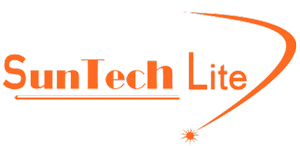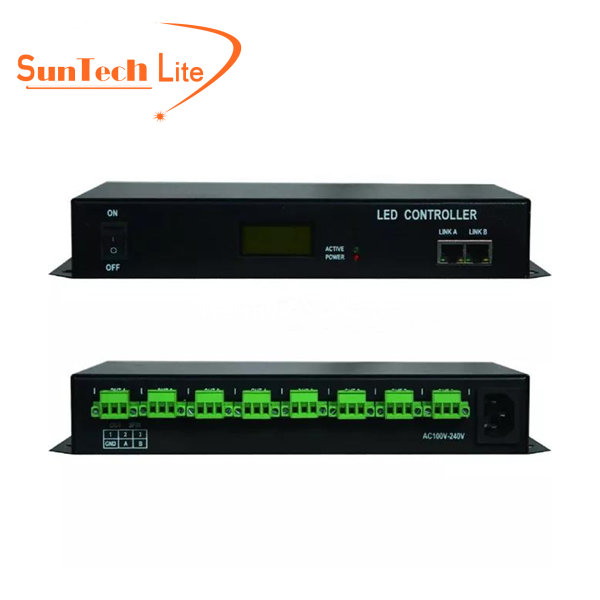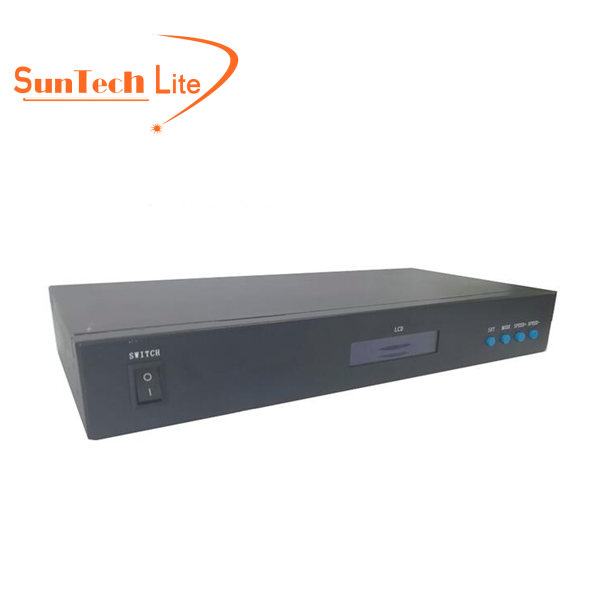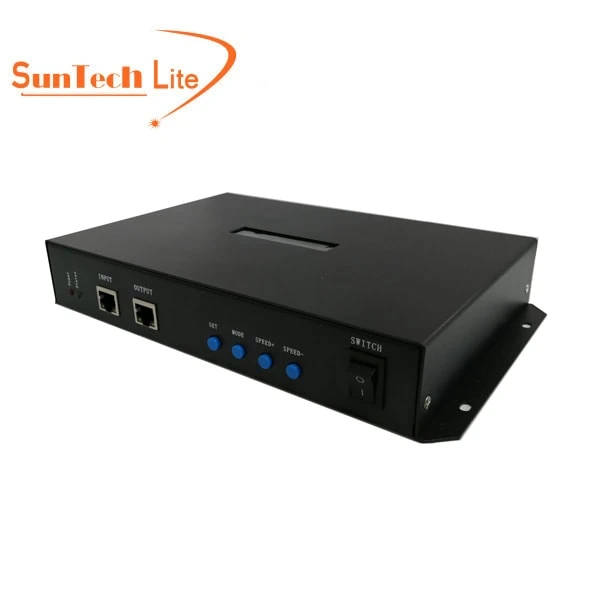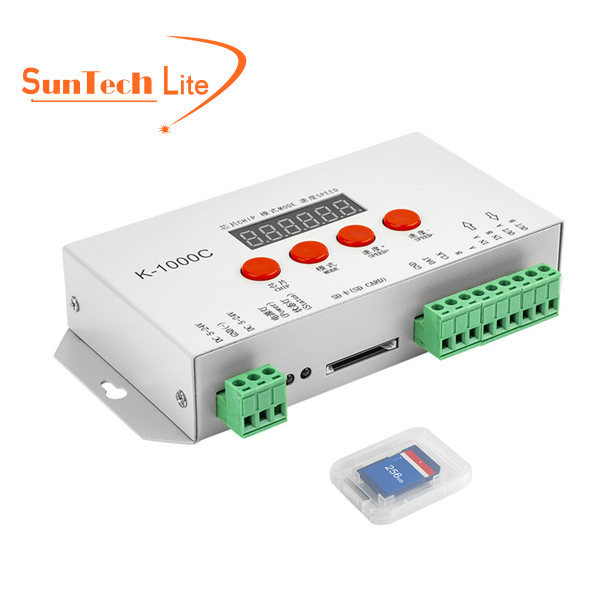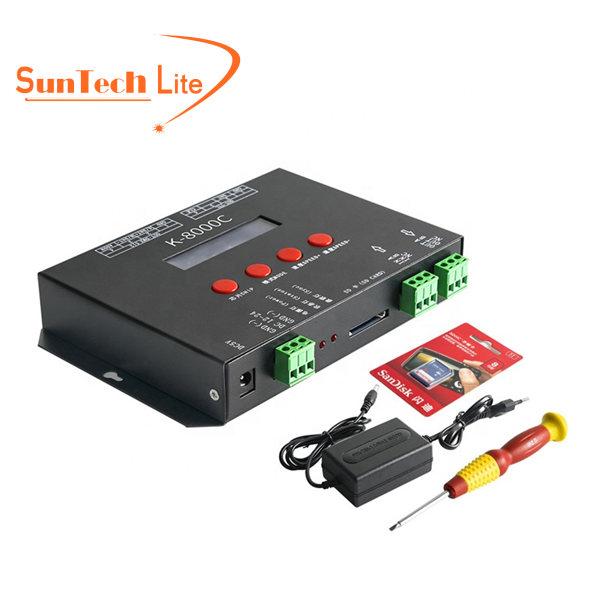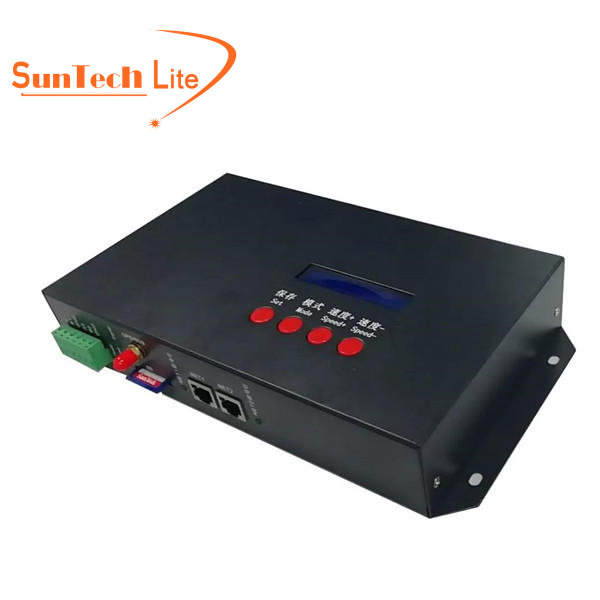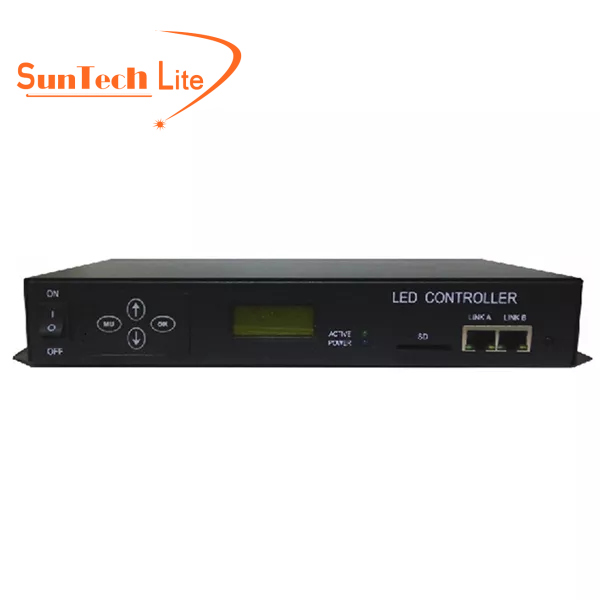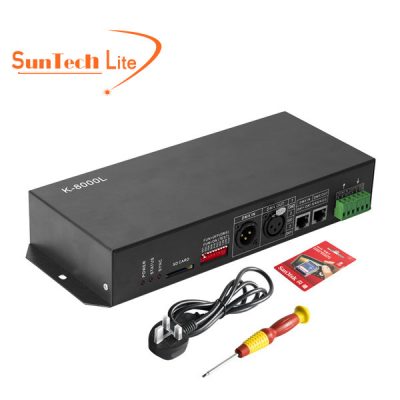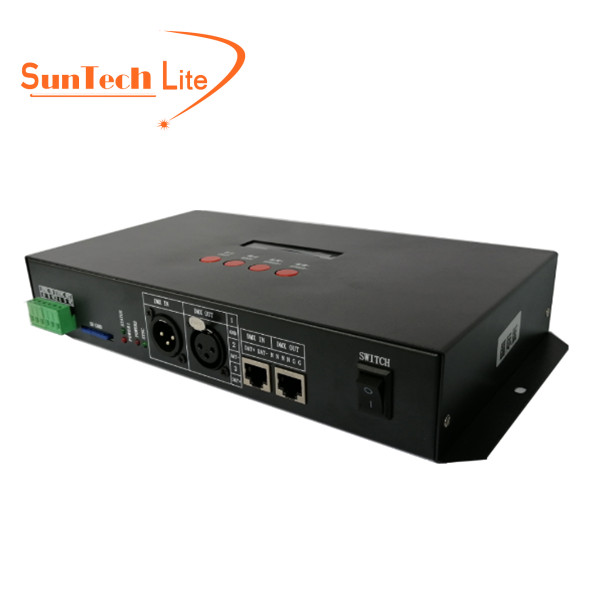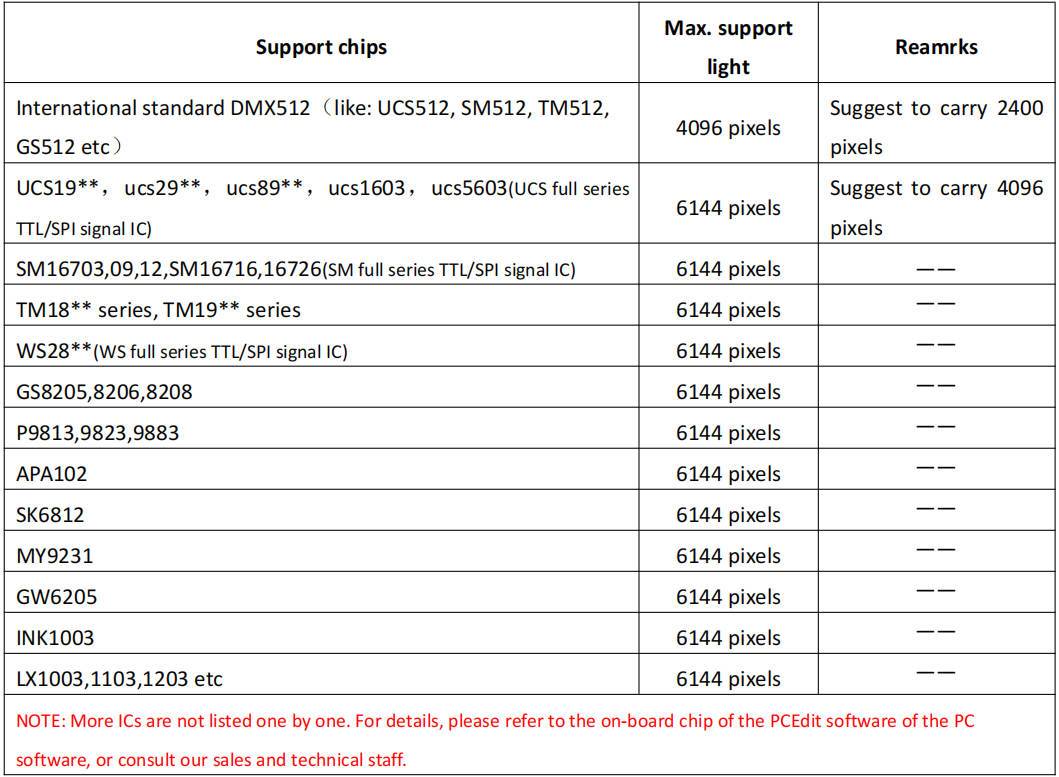
1. 1000Mbps/ 100Mbps optional: adapt to different project schemes;
2. Two-way redundancy of the system signal, doubled stability;
3. Four-color independent algorithm: energy-saving, environmental-friendly and with pure color;
4. Integrated synchronous and asynchronous control, online in priority, automatic switching to the offline effect without online signal, to realize video source backup;
The MR-218DW supports input voltages of 5V to 24V and can control up to 2048 pixels. It features 16 built-in patterns, custom pattern support, and various control options.
The MR-218DW is a versatile LED sub-controller that supports a wide range of addressable LED chips and strip types. Matching with the master controller MR-BF12B, it offers multiple control options, including smartphone applications, remote controls, and DMX512-compliant control systems.
1. The controller has 8 output ports, each port can carry up to 170/512/768 pixels(Different pixels for different
chips).
2. The controller port outputs two kinds of signal protocol: (1)DMX512/1990 international standard protocol and DMX512 extended protocol; (2)SPI/TTL serial protocol.
3. The controller output port provides three protections to ensure that the controller output port is not burned out in the case of a short circuit or reverse connection in the controlled lamp.
4. Controller ID automatic/manual numbering function, which can be numbered together with multiple controllers, or individual controller numbers.
The T790K supports input voltages of 5V to 24V and can control up to 4096 pixels. Matching with XB-Z2 master controller, it supports multiple chip types and offers a range of control methods, including smartphone applications and DMX512 compliant systems.
- Support 8 output ports, each can carry a maximum of 1024 pixels (TTL and DMX512).
- The port outputs two types of signal protocols: ①DMX512/1990 international standard protocol and DMX512 extension protocol; ② SPI/TTL serial port protocol.
- Load DMX512 lamps, with the output rate of 250K/500K/750Kbs.
- When controller with Madrix software, each port can load 1/2/3/4/5/6 Univ of lamps (one Univ = 170 point light sources).
LED Sub-Controller Applications
Signage Lighting: LED strip lights can be used for signage lighting, as they can create eye-catching displays. With LED sub-controllers, the lighting can be easily adjusted to match the branding and messaging of the sign.
Home Lighting: LED sub-controllers allow homeowners to create customized lighting scenes throughout their homes. With the ability to adjust color and brightness, sub-controllers can help set the perfect mood for any occasion, whether it’s a cozy night in or a lively party.
- Artistic Lighting: LED strip lights can be used for artistic lighting applications, such as illuminating sculptures, paintings, and installations. Sub-controllers allow for precise control of the lighting, allowing artists to highlight specific aspects of their work.
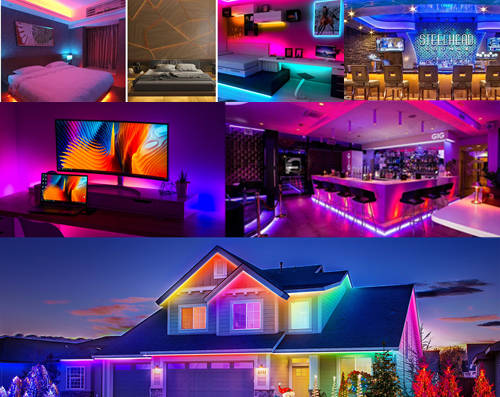
Why Need Addressable LED Sub Controllers?
Table of Contents
Introduction
Addressable pixel LED sub-controllers are essential components in the world of LED lighting, as they allow for fine-grained control over individual LEDs or groups of LEDs in a strip. These controllers make it possible to create stunning visual effects, synchronize lighting with music, and incorporate interactive elements into your lighting projects. In this article, we will discuss two popular addressable pixel LED sub-controllers: the MR-218DW and the T-790K.
Working Mechanism of Addressable Pixel LED Sub-Controllers
Addressable pixel LED sub-controllers work by receiving control signals from a master controller or control device and translating those signals into instructions for the individual LEDs on a strip. This allows for precise control of color, brightness, and timing for each LED, enabling complex lighting patterns and effects.
Benefits of Using Addressable LED Sub-Controllers
Addressable LED sub-controllers provide numerous benefits, including:
- Precise control over individual LEDs or groups of LEDs
- The ability to create custom lighting effects and patterns
- Simplified integration with other control systems
- Enhanced system performance and reliability
Setting Up an Addressable LED System
Choosing the Right Sub-Controller
Selecting the appropriate sub-controller for your addressable LED strip is crucial for achieving the desired lighting effects. Consider factors such as the type of addressable LED strip, the number of pixels, and the control method when making your decision.
Connecting the Components
Properly connecting the components is essential for the proper functioning of your addressable LED system. This includes connecting the sub-controller to the LED strip, power supply, and master controller or control device.
Configuring the System
After connecting the components, configure the system by selecting the appropriate communication protocol, setting the pixel count, and adjusting any other necessary settings.
Programming Addressable LED Strips
Creating Custom Effects
Addressable LED sub-controllers often support custom programming, allowing users to create unique lighting effects and patterns tailored to their specific needs.
Predefined Patterns
Many sub-controllers, including the MR-218DW and T790K, come with built-in lighting patterns, providing a quick and easy way to create dynamic lighting effects.
Timing Functions
Addressable LED sub-controllers typically support timing functions, enabling users to schedule lighting changes or synchronize lighting effects with external events, such as music or video.
Conclusion
Addressable pixel LED sub-controllers, such as the MR-218DW and T790K, are powerful tools for creating stunning and customizable lighting effects. By understanding their features, applications, and limitations, you can make informed decisions when designing and implementing addressable LED systems.
FAQs
1. Can I use the MR-218DW and T790K with any addressable LED strip?
Both the MR-218DW and T790K support a wide range of addressable LED strips, including WS2812B, APA102, and SK6812. However, always verify compatibility before connecting the sub-controller to your LED strip.
2. How many addressable LEDs can the MR-218DW and T790K control?
The MR-218DW can control up to 1024 pixels, while the T790K can control up to 4096 pixels.
3. Are the MR-218DW and T790K compatible with DMX512 control systems?
Yes, both sub-controllers are compatible with DMX512-compliant control systems, allowing for seamless integration with professional lighting control systems.
4. Can I create custom lighting effects using the MR-218DW and T790K?
Yes, both sub-controllers support custom programming, enabling users to create unique lighting effects tailored to their specific needs.
5. What are some common applications for addressable LED strips?
Addressable LED strips are used in a variety of applications, including architectural lighting, stage design, advertising displays, interactive installations, and home interiors.
